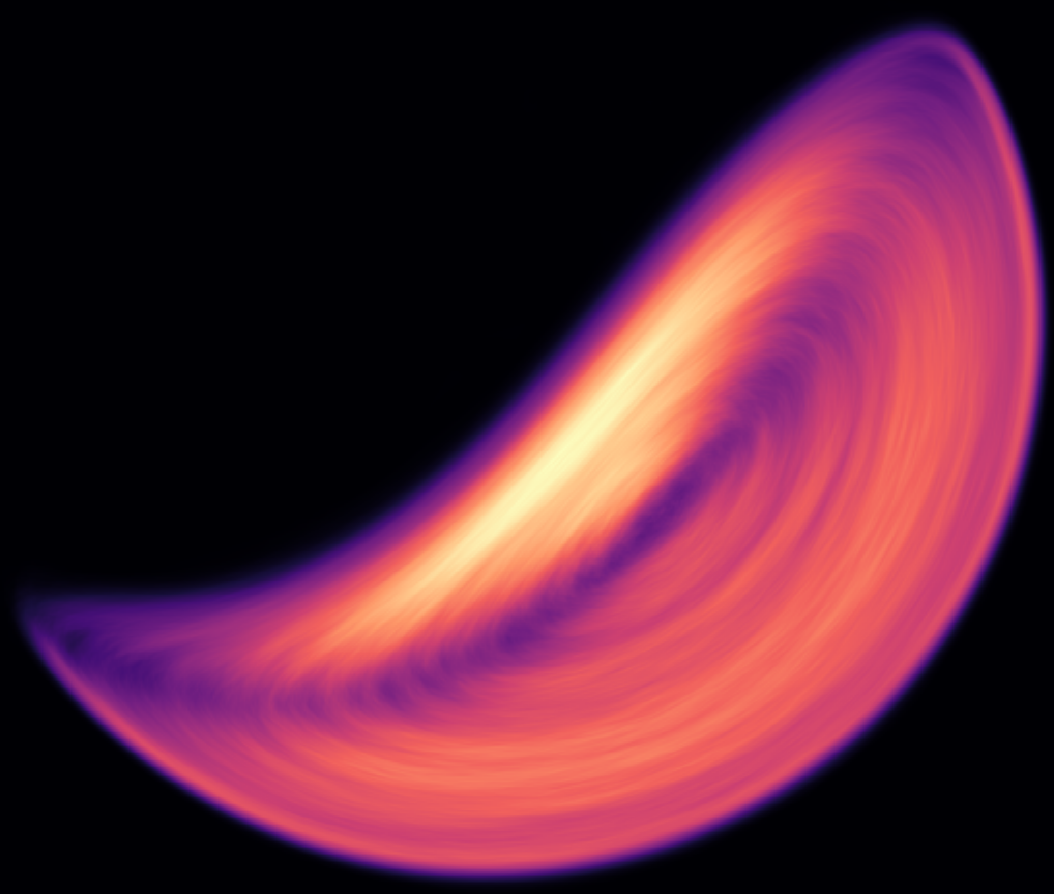The KonigCell Library’s Documentation#
Quantitative, Fast Grid-Based Fields Calculations in 2D and 3D - Residence Time Distributions, Velocity Grids, Eulerian Cell Projections etc.
That sounds dry as heck.
Project moving particles’ trajectories (experimental or simulated) onto 2D or 3D grids with infinite resolution. Better? No? Here’s a pretty explanatory graph:

Heatmap of a 2D residence time distribution in a GranuTools GranuDrum, imaged using Positron Emission Particle Tracking.
This is, to my knowledge, the only library that accurately projects particle trajectories onto grids - that is, taking their full projected area / volume into account (and not approximating them as points / lines).
It’s also the only one creating quantitative 3D projections:

Scatter plot of a 3D velocity distribution in a GranuTools GranuDrum, imaged using Positron Emission Particle Tracking.
And it is fast - 1,000,000 particle positions can be rasterized onto a 512x512 grid in 7 seconds on my 16-thread i9 CPU. The code is fully parallelised on threads, processes or distributed MPI nodes.
Tutorials and Documentation#
At the top of this page, see the “Getting Started” tab for installation help; the “Tutorials” section has some explained high-level examples of the library. Finally, all exported functions are documented in the “Manual”.
Contributing#
You are more than welcome to contribute to this library in the form of library improvements, documentation or helpful examples; please submit them either as:
GitHub issues.
Pull requests (superheroes only).
Email me at <a.l.nicusan@bham.ac.uk>.
Acknowledgements#
I would like to thank the Formulation Engineering CDT @School of Chemical Engineering and the Positron Imaging Centre @School of Physics and Astronomy, University of Birmingham for supporting my work.
And thanks to Dr. Kit Windows-Yule for putting up with my bonkers ideas.
Citing#
If you use this library in your research, you are kindly asked to cite:
<Paper after publication>
This library would not have been possible without the excellent r3d library (devonmpowell/r3d) which forms the very core of the C subroutines; if you use KonigCell in your work, please also cite:
Powell D, Abel T. An exact general remeshing scheme applied to physically conservative voxelization. Journal of Computational Physics. 2015 Sep 15;297:340-56.
Licensing#
KonigCell is MIT licensed. Enjoy.
Indices and tables#
Documentation
Pages